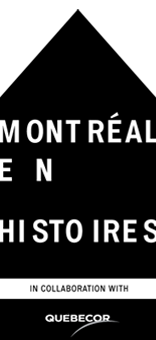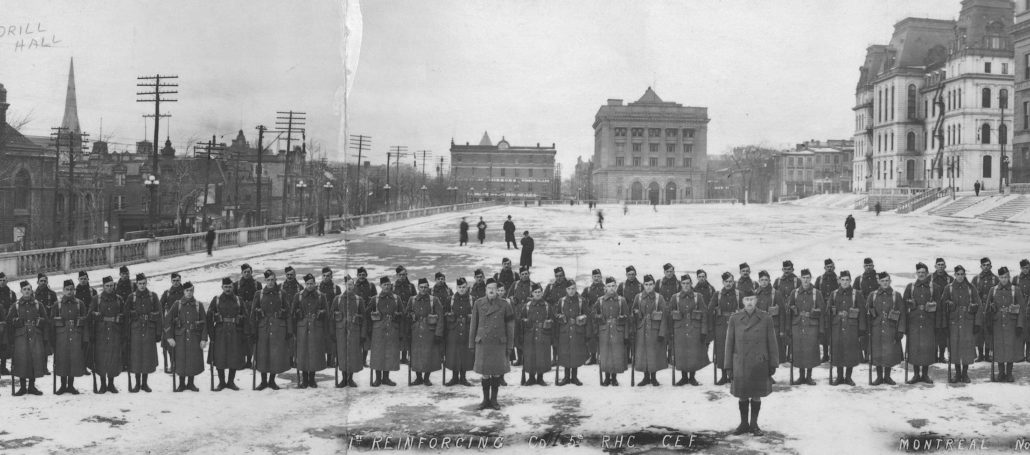School Zone
Designed by history professor Martin Landry, this educational platform offers all students in Quebec learning and evaluation situations (LES) about Montréal’s history at no cost. By May 2017, six LES will be distributed to high schools in the social studies and language courses.
To ask for the corrected version, please send an email to [email protected].
MONTREAL’S HISTORICAL FIGURES
This activity explores the influence of certain historical characters on the evolution of Quebec society. In groups of two, students will bring a character to life. Each team must create a dialogue between two historical characters who have marked the city’s history.
To carry out this LES, download the documents.
MARGUERITE BOURGEOYS, PIONEER IN EDUCATION
This LES helps students discover Marguerite Bourgeoys’s history, closely linked to the founding of Ville-Marie. Students are encouraged to think about the work of Marguerite Bourgeoys and the Notre-Dame Congregation in education, and, by extension, the place of women in this field.
To carry out this LES, download the documents.
MONTREAL : IMMIGRANT CITY
The goal of this LES is to improve students’ knowledge about the multi-ethnic origins of Montréal’s current population. It includes the eras of French and British rule as well as the present. This LES offers activities that will culminate into the creation of a large mosaic depicting the history of the various groups that make up the population of Montréal.
To carry out this LES, download the documents.
MONTREAL, CANADA’S MOST IMPORTANT CITY
This LES demonstrates the importance of Montréal as a key economical capital in Canada. The activity focuses mainly on the historical period of British rule, but students also make comparisons with the current period.
MONTREAL IN PICTURES
This LES focuses on the influence of imperialism, capitalism, ultramontanism and French Canadian nationalism on the art and architecture of different Montréal neighbourhoods. The activities will demonstrate the importance of photography in history and will lead to the creation of a virtual photographic exhibition.
EVENTS THAT MADE MONTREAL
Twelve important historical events that contributed to the creation of Montréal as we know it today.
MEDIA LIBRARY
Watch the educational short videos on Montreal’s history (available in French only).
TIMELINE
375 MOMENTS TO DISCOVER
Travel through time and discover the archives that have made Montreal and its history.
DID YOU KNOW?
Osheaga
It is generally agreed that the word Osheaga means “great rapids”—a very symbolic name for a festival as energetic as the one that Montreal hosts from July 29 to 31. According to some historians, the name Hochelaga derives from Osheaga. A legend even tells that during their first meeting with the Mohawk people in 1535, Jacques Cartier’s crew members waved their hands wildly in the air as they approached the threatening Lachine Rapids. The natives are supposed to have shouted “O she ah ga” to the Europeans. Some may have interpreted this to mean “people vigorously waving their hands.” However, this translation was not recorded during the short stay by Jacques Cartier on the Island of Montreal, and this origin story is in fact just another myth. “Great rapids” is therefore the correct meaning to give to the word Osheaga. Did you know that according to Aboriginal beliefs, rapids are created when the gods destroy dams built on waterways by giant beavers?
Remembrance Day
Remembrance Day is a memorial day observed in Europe and Commonwealth countries on November 11th of each year to recall the signing of the Armistice ending the First World War. In Canada, the poppy is a symbol associated with the memory of those who died during war. QUIZ: What is the link between Jean Brillant and Montreal? ANSWER: His name was givien to a pavilion at the University of Monteral. The highest military award of the Commonwealth is the Victoria Cross. It was granted to a single French Canadian in World War II. Quebecer Jean Brilliant received this great honour for his conspicuous bravery and for his extraordinary zeal in the Great War.
The First General Election
At that time, there was no fixed date to vote. People voted in the summer, usually in June and in July. A polling station was erected where voters came to vote one after the other. Every person declared, out loud, who he or she was voting for, but only after stating his or her name, profession and the place where his or her assets were located. According to the British tradition, the polling station was open from 8 am to 6 pm for at least four days. However, if no one came to vote for at least one hour, three electors could request to close the office. As soon as the election was closed, the election officers announced the candidate elected aloud to the voters that were present. Over time, election candidates would organize to prevent supporters of their opponents to vote. • For a candidates at this time, one of the main strategies to control poling was by hiring a band of enforcers to control access to the electoral office. They prevented their opponents from entering and voting by intimidating the voters. • If another candidate decided to hire enforcers, the situation deteriorated into a battle.
In addition, the electoral law prohibited voting to certain ethnic, religious, or other groups. The constitutional Act of 1791 clearly states that “Any person who is at least 21 years old and who is a British subject by birth or that has become one by the Canadians Assignment of England, has the right to vote provided they meet the requirements of the electoral franchise”, meaning having a minimum of goods specified in the Act. The document adds: “Unlike women in other colonies in the North of Britain, those in Lower Canada who meet the property qualification requirements can vote”. In contradiction, it is also stated in the Constitutional Act of 1791 that women are also excluded- not by a law but by agreement of a vote. In a nutshell, only a small fraction of the female population was eligible to vote in the eighteenth century. This law was removed a few years later. Fortunately for us, these anti-democratic practices are from another era. On October 19th, 2015, all Canadian citizens, men and women aged 18 years and older, registered on the electoral list can exercise this fundamental right to elect the 42nd parliament of Canada. Le marché Saint-Anne, siège du Parlement du Canada-Uni, années 1940, VM6,R3596-2_400_1845-1859-002
Canada Day
On July 1st, hundreds of thousands of Canadians celebrate Canada Day. However, did you know that this national holiday was not always called so? In 1868, citizens were encouraged to celebrate the anniversary of the birth of the Canadian confederation, but it was not until 1879 that the date of Jul 1st was officially proclaimed Dominion Day. Initially, this event had not generated much interest because the majority of Canadians were still very attached to the British Empire. Their patriotism was mainly manifested during Victoria Day. Therefore, we recognize 1917, the 50th anniversary of the birth of the Confederation, to be the first celebrations of Dominion Day that took place on Parliament Hill in Ottawa. Finally, in 1980, Canadian patriotism finally affirrmed, we started to see festivals around the country unfold. In addition, O Canada became the oficial anthem of the Canadians. In 1982, through the adoption of the Constitution Act, the country became an independent nation. That same year, Dominion Day was renamed Canada Day.














